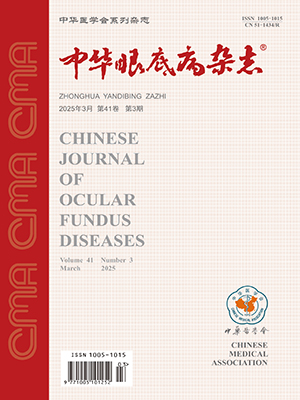Objective To compare the outcomes of 23G and 20G vitrectomy in treatment of proliferative diabetic retinopathy (PDR). Methods This was a prospective randomized study. One hundred twenty six patients (142 eyes) suffering from PDR with symptoms requiring vitrectomy were randomly divided into 20G vitrectomy group (66 patients, 74 eyes) and 23G vitrectomy group (60patients,68eyes). Visual acuity, intraocular pressures,indirect ophthalmoscopy, B-scan ultrasound, tear film break up time (BUT), Schirmer Ⅰ test (S Ⅰ T), astigmatic power and the astigmatic axial at 6 mm area of anterior and posterior corneal surface were observed and measured before surgery. The follow-up period was 15.0 and 12.5 months separately in 20G and 23G groups. Intraoperative complications, operation time, postoperative visual acuity, intraocular pressure, postoperative complications, reoperation, and postoperative ocular conditions including changes of astigmatic power and the astigmatic axial measurements were analyzed. Results At last follow-up, there was 49 eyes (66.2%) and 47 eyes (69.1%) with visual acuity ge;0.05 in 20G and 23G groups. Comparing visual acuity ge;0.05, there was no statistical difference between the groups ( chi;2=0.14, P>0.05). The eyes suffering from iatrogenic injuries were 18 (24.3%) and seven (10.3%). There was obvious difference in iatrogenic injury between the two groups ( chi;2=4.81, P<0.05). The mean surgical times were (69.0 plusmn;8.2) and (51.0 plusmn;6.3) minutes in 20G and 23G group, which was significantly different (t=3.65, P<0.05). The postoperative third day, hypotony was detected in three (4.1%) and 11 eyes (14.7%) in 20G and 23G group, which was a significantly different ( chi;2=5.85, P<0.05). Postoperatively high intraocular pressures were not significantly different between the two groups ( chi;2=2.54,P>0.05). There were 24 (32.4%) and 14 eyes (20.6%) in 20G and 23G group. There were significant differences in BUT, SⅠT, astigmatic power and the astigmatic axial measurements compared with those preoperatively at the first month after operation (t=3.35, 4.12, -3.12, -3.22; P<0.05), but no significant differences in them at the third and sixth month after operation (third month: t=0.45, 0.98, -2.12, -1.02; P>0.05, and the sixth month: t=0.95, 1.48, -1.02, -2.11; P>0.05). In 23G group, there were no significant differences in BUT, SⅠT, astigmatic power and the astigmatic axial measurements compared with those preoperatively at the first, third and sixth month after operation (first month: t=1.21, 1.46, -2.32, -1.61; P>0.05, third month: t=1.45, 2.21, -2.19, -1.89; P>0.05, and sixth month: t=1.92, 1.25, -1.76, -2.35; P>0.05). Conclusion 23G vitrectomy is a safe and effective treatment for PDR with shorter surgery time, fewer surgical complications and postoperative ocular surface changes.
Citation: 沈玺,徐建敏,李娜,王晶. Comparison of 23G and 20G vitrectomy for treatment of proliferative diabetic retinopathy. Chinese Journal of Ocular Fundus Diseases, 2012, 28(3): 232-236. doi: Copy
Copyright © the editorial department of Chinese Journal of Ocular Fundus Diseases of West China Medical Publisher. All rights reserved




